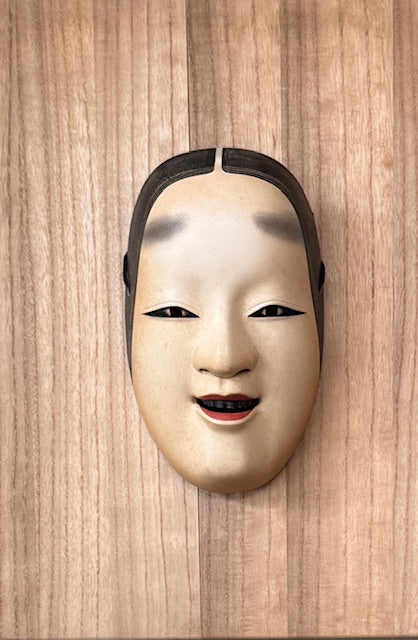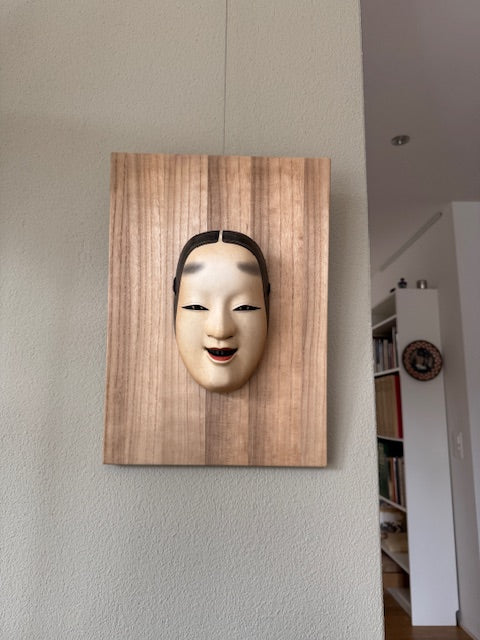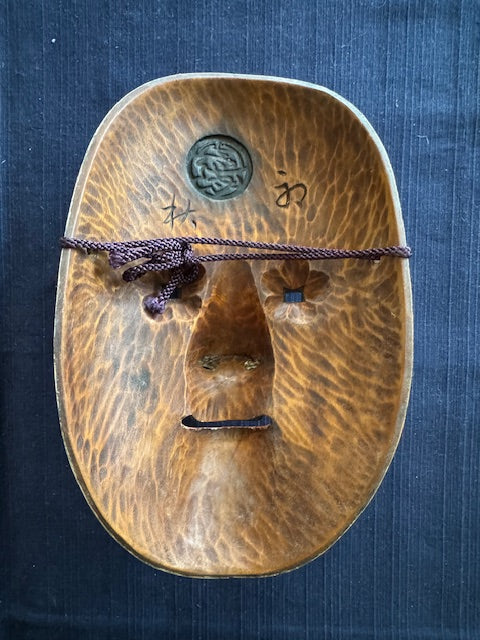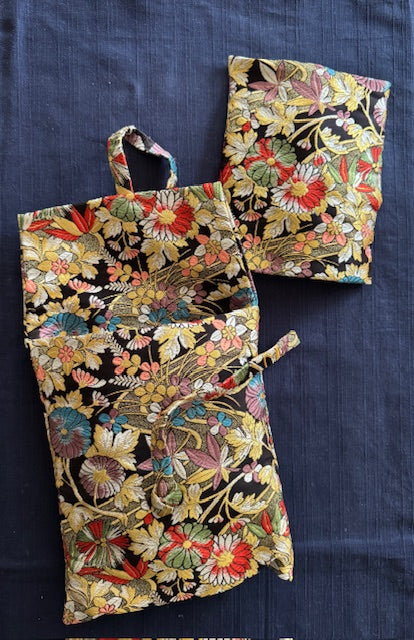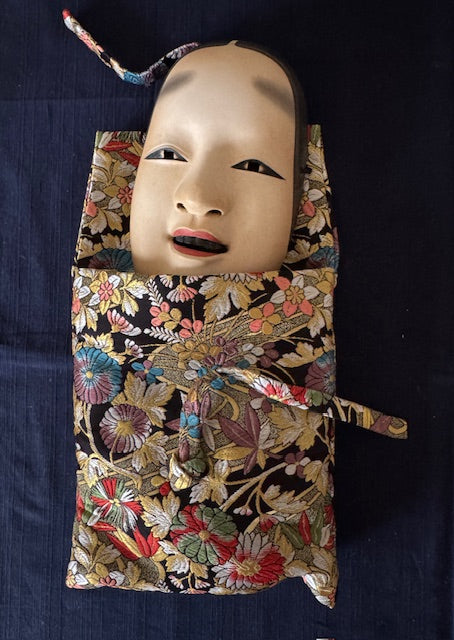Guignard Kyoto Collection
Noh mask Ko omote (young girl) with brocade bag | unknown (seal and initials present) | ? (early 20th century)
Noh mask Ko omote (young girl) with brocade bag | unknown (seal and initials present) | ? (early 20th century)
Couldn't load pickup availability
Noh theatre is a cultural icon of Japan. It emerged in the form we know today in the Muromachi period (1333-1584). The most important characteristic of this art is the use of masks, which is used to create a typeface. But this is very differentiated, especially when it comes to women. There are masks for 15-year-old girls, for young women, for mature wives and even for emaciated old women who no longer have any feminine charms.
This mask of a young, blooming beauty is the ko omote type. It corresponds to the ideal of women in the Muromachi period (1336-1573). At that time, women still plucked their eyebrows and marked them with black make-up to look like little clouds. The teeth were dyed black because white teeth looked too animalistic.
The masks are relatively small, they barely cover the face of an actor (always male). This aesthetic is intended to make it clear in the theater that the person on stage is "only" being acted and that a naturalistic illusion is not being sought. The power of Noh theater lies in its symbolism, in the emotional communication of deep symbols for human existence.
This mask was never used in the theater (acted masks rarely appear in stores, and if they do, they are unaffordable). However, it is signed and has a branded stamp, which underlines the professional craftsmanship that characterizes this mask face.
This mask comes with a specially made brocade bag made from a type of fabric used for Noh robes.
